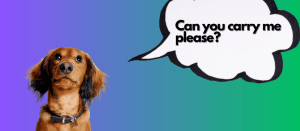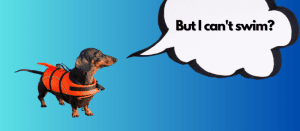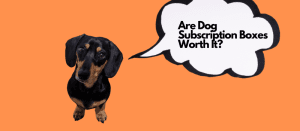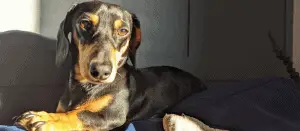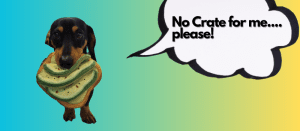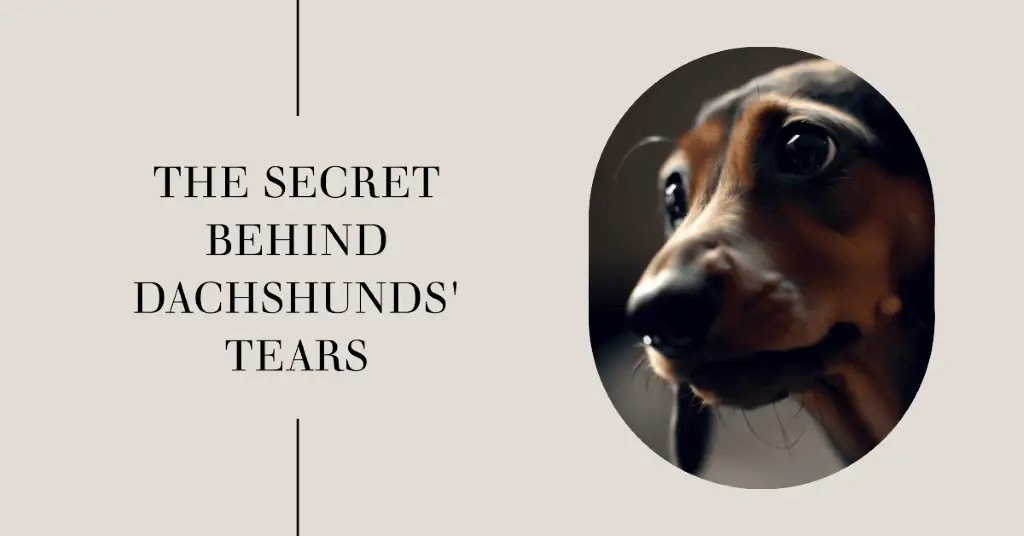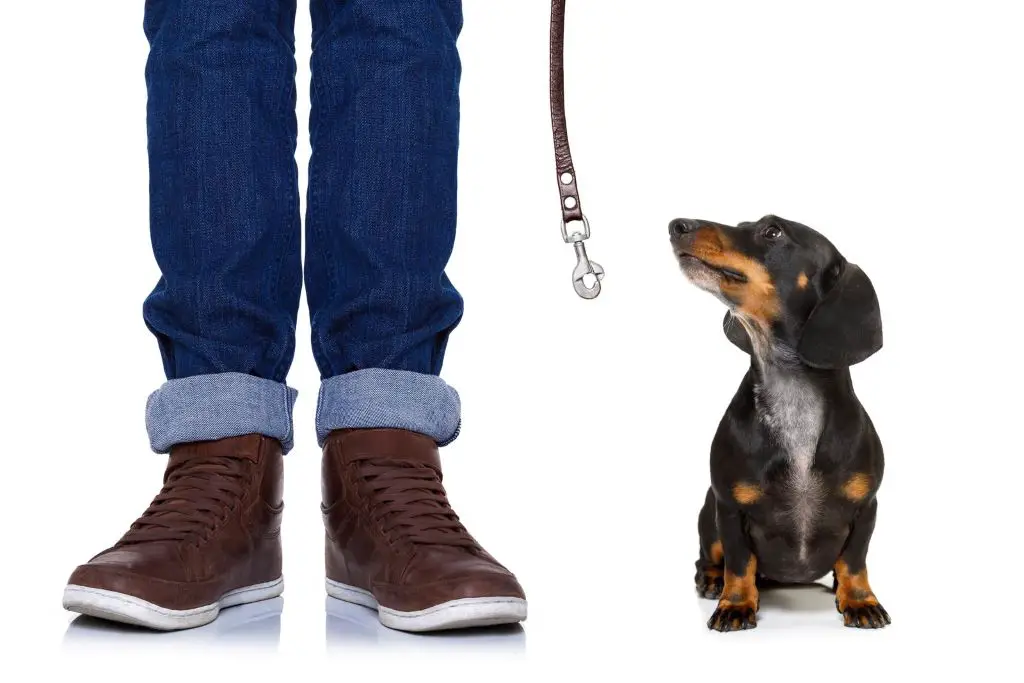Warning: Trying to access array offset on value of type bool in /home/u778996160/domains/dachshundtalk.com/public_html/wp-content/plugins/wp-word-count/public/class-wpwc-public.php on line 123
Warning: Trying to access array offset on value of type bool in /home/u778996160/domains/dachshundtalk.com/public_html/wp-content/plugins/wp-word-count/public/class-wpwc-public.php on line 123
If you’re reading this, there’s a good chance that you have a long-haired dachshund in the house or know someone who does. If you don’t own one yourself, chances are you’ve seen them at some point while visiting family members with dogs, walking your dog, petting stray cats, etc.
A long-haired dachshund can be a very sweet, gentle-natured dog. They’re also prone to matting hair which makes brushing out their coat a chore. It takes time, patience, and diligence to get their fur looking clean but not too shaggy.
If you already own a long-haired dachshund and would like to learn how to groom them properly, keep reading!
How do I choose the right brush for my long-haired dachshund?
There are so many different types of brushes used for washing pets’ coats, but choosing the best ones depends largely on the type of coat your dog has. Your long-haired dachshund’s fur is usually longer than other dogs, and they shed more often because they’re shedding dead skin cells from their undercoats. This means you need a soft bristle brush that will allow you to gently remove tangles while giving enough pressure to dislodge loose hairs.
You’ll also need a wide-toothed comb that isn’t sharp, as well as a slicker brush. The wide teeth of these two items work together to help smooth down any remaining loose hairs. You may even use an old sock instead of a wide-toothed comb if necessary.
It’s important to remember that your long-haired dachshund doesn’t need a heavy shampooing every day. Their long coats require less shampoo than those of short-haired dogs. The shampooing process shouldn’t hurt your animal’s skin or dry out its fur. If you notice your long-haired dachshund is having discomfort after bathing, call your vet immediately.
What about fleas? How do I prevent flea infestations?

Fleas live off the blood of animals and can cause severe itching, sores, red welts, and sometimes fever. Fleas thrive in hot, humid climates where most people tend to leave their pets outside. So if you find long-haired dachshunds roaming around outside in the summertime, you might want to take extra precautions.
To prevent flea infestation, make sure you thoroughly inspect your dog’s body regularly and check for signs of fleas. Look closely near their ears, armpits, and groin area. If you see small black specks moving rapidly across their bodies, that’s a sign of fleas. Take immediate action by vacuuming up all traces of dirt and debris, dusting areas, treating infested bedding and clothing with an insecticide spray (such as Frontline). Wash all linens weekly using hot water. And wash your dog’s bedding twice per week.
Also, try taking your long-haired dachshund indoors during warm seasons. Keep them away from sunny windowsills, where they can lay flat on their bellies and scratch themselves into a frenzy.
How often should I bathe my long-haired dachshund?
Your long-haired dachshund needs to be bathed once every three weeks, minimum. This helps control odor and keeps their coat free from matted hair. Bathing your dog on a regular basis will also reduce the amount of bacteria on your pet.
If possible, let your dog cool down before you begin bathing him/her. A damp towel placed over his head and neck will give your long-haired dachshund enough relief until he becomes calm enough for you to handle him safely.
When showering your long-haired dachshund, always start with soap and water first. Then apply shampoo followed by conditioner. Rinse the soap residue off thoroughly.
While shampooing, never pull on your dog’s wet hair — only use light strokes. After rinsing, pat your long-haired dachshund dry with a towel. Make sure to replace all towels and treats as soon as you finish drying your dog.
How to Groom Longhaired Dachshund?
Now that you know how to choose the proper grooming tools and how often to bath your long-haired dachshund, here are some tips on grooming techniques.
Brush your long-haired dachshund’s fur and fluff it out in the same direction. Don’t brush against the grain of the fur. Using a stiff-bristled brush, brush each section of fur starting from the top and ending at the bottom.
Brush through the fur vigorously to loosen the tangles and detangle the knots. Be careful not to force the bristles between the hairs. If you encounter hard spots, stop brushing your dog and wait for 15 minutes. Apply shampoo and repeat the brushing process.
Don’t use harsh chemicals such as ammonia, hydrogen peroxide, or kerosene on your long-haired dachshund’s coat. These products contain ingredients that can irritate your dog’s skin. Instead, rinse your pet’s face and nose with tepid water after cleaning it with shampoo. Use a cotton ball soaked in vinegar to disinfect your long-haired dachshund’s wounds and cuts.
Never use nail polish remover on your dog’s eyes, paws, or lips. Even though it sounds counterintuitive, don’t ever put toothpaste directly on your dog’s mouth. Toothpaste contains abrasive agents that could damage your dog’s gums and affect its breath.
Make sure you’re familiar with your long-haired dachshund’s natural scent. In case you’re unaware, their smell is actually quite pleasant and refreshing. Just think of it as a combination of fresh air, ocean breeze, and rose garden.
Avoid putting strong scents on your pet’s coat, as these can easily become cloying. Also, refrain from spraying perfume on your long-haired dachshund’s fur. Perfume smells nice initially but eventually turns rancid and causes irritation.
Avoid using combs with metal teeth on your long-haired dachshund’s fur. Metal combs can break apart and shred the softer, weaker strands of hair underneath. When brushing your dog’s fur, don’t forget to brush between the toes.
Never brush your pet’s hair upwards unless you’re going to shave it. Doing so can injure your pet’s sensitive skin.
After brushing your long-haired dachshund’s fur, run a comb through it to separate the loose hairs. Next, dip a wide-tooth comb in hot water and gently go over your long-haired dachshund’s entire coat. Comb slowly and carefully to avoid making the loose hairs stand up. Repeat the process several times until you reach the end of your dog’s tail.
Use a slicker brush to smooth down any remaining loose hairs. Remember that the tighter you hold, the slicker brush, the better the result.
Once your long-haired dachshund’s fur looks shiny and silky, rinse it off again with cold water. Pat it dry and then apply a finishing product. Finish off by applying a shine serum, spray, or lotion to your dog’s coat.
Things to consider when grooming a long-haired dachshund.
It’s easy to get overwhelmed when it comes to caring for a long-haired dachshund. Here are some things to consider when it comes to grooming your long-haired dachshund.
Grooming your long-haired dachshund requires a little bit of research. There are certain procedures that must be done routinely in order to maintain optimum health and beauty for your pooch.
- Bath your long-haired dachshund daily for maximum comfort and hygiene.
- Check your dog’s nails frequently to ensure healthy growth.
- Feed your long-haired dachshund a nutritious diet rich in protein and vitamins.
- Provide ample space for exercise and play.
- Give your long-haired dachshund plenty of attention and love.
Types of brushes and grooming tools.
When grooming your long-haired dachshund, you’ll need a variety of tools and accessories. Here are some of the essential ones.
Brushes: You’ll need at least two large-toothed brushes made especially for dogs. One of these brushes should be a medium-soft bristle brush (with no wire) for general brushing.
Another one should be a stiff-bristle brush (also without wire) specifically designed to comb out tangles and eliminate mats. Choose the appropriate size based on your dog’s age, breed, and weight. As a rule of thumb, bigger breeds should have larger brushes.
Combs: Whether you have short or long hair, you’ll need one broad-tooth comb specially designed for dogs. Unlike human hair, dog hair grows downward rather than upward.
Combing your dog’s fur upward can cause pain and injury. The teeth of these combs should be fine and soft enough to penetrate your dog’s thick undercoat.
Wrapping things up
Grooming is an important part of having a long-haired dachshund because it keeps his coat healthy and free from tangles and matting that can cause skin problems or even hair loss in extreme cases.
Just remember that if you don’t want to do it yourself, it’s best to take your dog to a professional groomer regularly or ask someone who knows how to handle this breed to do it for you so that he can get it done safely while looking good as well!

